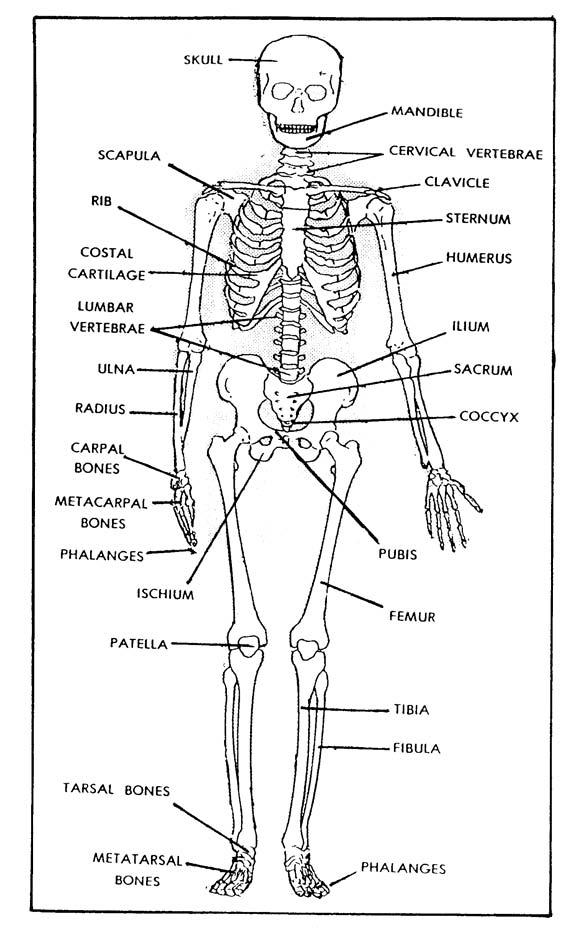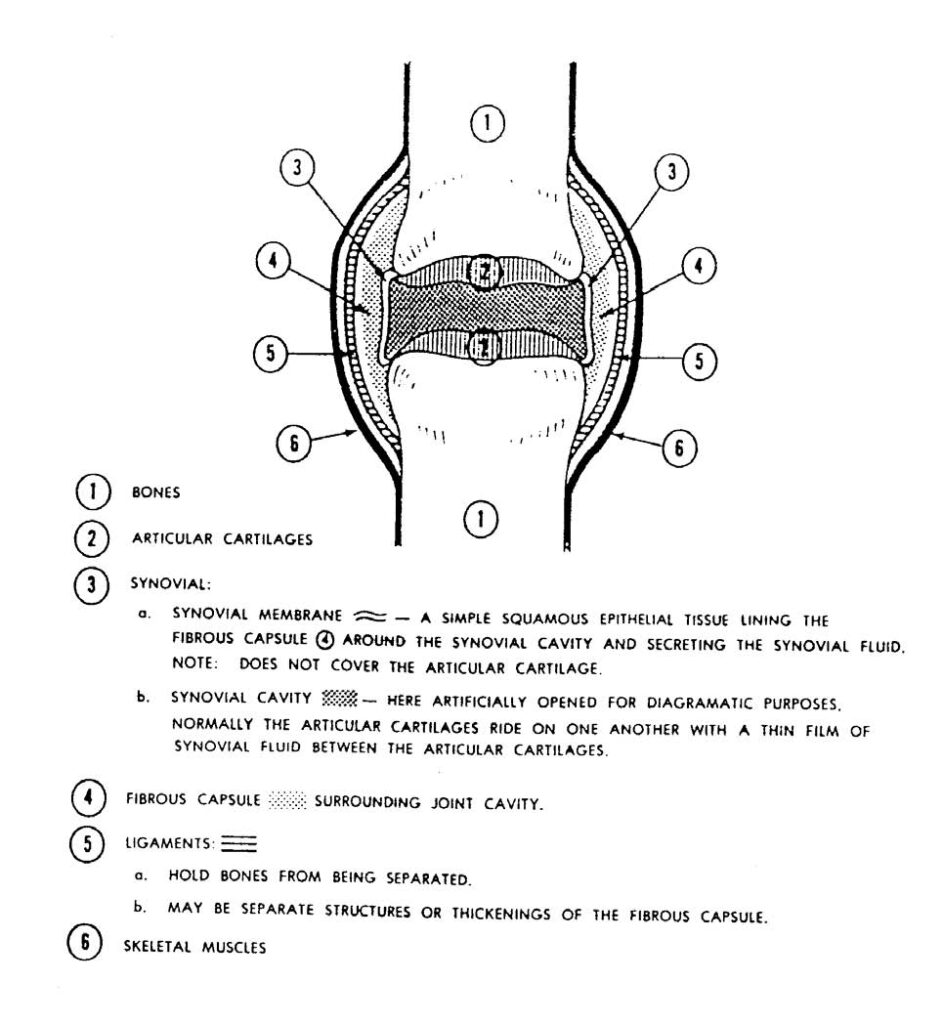1-1. THE SKELETAL SYSTEM
The human skeletal system (see figure 1-1) consists of about 206 bones. The skeleton gives shape and support to the human body. Together with the skeletal muscles, it performs movement of the body. The skeleton, especially the skull and rib cage, provides protection to vital internal organs such as the brain, lungs, and heart. The red marrow in the center of bones produces red blood cells that carry oxygen and nutrients to all parts of the body.

1-2. JOINTS
A joint (articulation) is formed when two bones make contact with each other. Some joints, such as the knee and shoulder, allow a good deal of movement. Other joints, such as the joints of the skull, allow little or no movement. The bones of movable joints do not actually touch each other. They are separated by fibrous tissue that prevents the bones from rubbing against each other. Ligaments, which are composed of very strong fibrous material, hold the ends of the two bones in place (see figure 1-2).

1-3. SKELETAL MUSCLES
The muscles that move bones are commonly called the skeletal muscles. They are also called striated (striped) muscles due to their physical appearance. Since these muscles are normally controlled by conscious thought (you “command” your arm to rise, for example), they are also called “voluntary” muscles. Muscles are connected to the bone by connective tissue called tendons.
NOTE: Involuntary muscles, such as the muscles found in the blood circulatory system and digestive system, perform their function with no need of conscious control.
